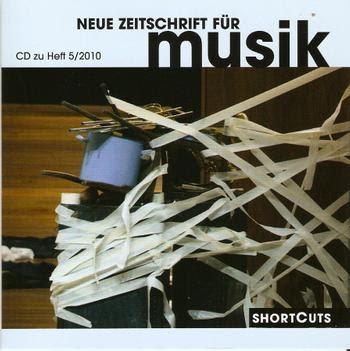Soundflakes

Granular synthesis is a fundamental sound synthesis or rather sound processing method. Working on a new composition, Electroclarinet 3 for basset-horn and live electronics , I've been studying Native Instruments Reaktor 's take on granulation. When teaching sound granulation , I like to use two engines based in cycling74's Max MSP: granularized , available in the Max examples Nobuyasu Sakonda's granular synthesis patch Granularized, a Max MSP example The interesting approach in Reaktor's Grainstates FX consists in eight "scenes" that can be recalled at will, and in the presence of a rotating buffer easy to freeze. The main adaptation I needed to do was to increase the buffer size from 8 to 60 seconds to record my whole "theme" when it's first played. But I'll let you know more about the composition next year (coming soon!) Grainstates, one of Reaktor's granular instruments. If you want to know and experiment more, one of the referenc...


























